“Let us build a house where love can dwell and all can safely live…” All Are Welcome
Story Outline
- We Are Losing Good People
- Elements of a Solution
- A Proposal to Help Combat Silicon Valley’s Crisis of Community
- But School Districts Aren’t Land Developers – Couldn’t It Bankrupt a School District?
- A New Way for the Story to Unfold
- References
We Are Losing Good People

It will be her third move in three-years. Unfortunately, for this service worker and the surrounding community, this time the move is 200-miles away to a place where rents are affordable. Her departure, which is way too common in Silicon Valley, will reverberate in subtle ways throughout the community.
No longer will her nieces and nephews have her cheering in the stands. Her sister won’t have her to shuttle the kids to their various activities. There will be a hole in the school cafeteria where a diligent worker made sure everyone had a full stomach. There will be a missing volunteer at the fundraising events to support youth programs. Those blessed by her presence will miss her enthusiasm and good cheer.
Unfortunately, the above scenario, based on a true, unfolding story, plays out every day in Silicon Valley. The issue goes beyond housing affordability, however, as many people move to our beautiful and vibrant area out of college and, once they have kids, they return to their home towns. At the other end of the spectrum, we have seniors who cash out and move to be nearer to their children (who can’t afford to live here) or to a location that better meets their needs.
top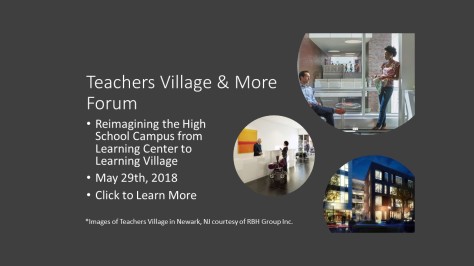
Elements of a Solution
“Housing Crisis” seems to be the daily headline. The issue is bigger than housing affordability, as alluded to above, as the crisis is one that threatens the foundation of our community and impacts all citizens of our great valley, regardless of demographic or socioeconomic status.
There is no silver bullet, but the elements that solutions will need to encompass include; affordability and quality, accessibility and vibrancy, and connectivity and mobility.
- Affordability is the obvious roadblock to living in Silicon Valley. But, the allure of Silicon Valley quickly fades, when one finds that affordability means sub-par living conditions. Simply put, the quality of the housing is important over the long-term.
- Similarly, there is more to life than four walls. Being able to easily access shopping and schools, parks and entertainment options, institutions of faith and social groups are the elements that enrich one’s life and are the threads that bind a community.
- Being able to get to a job, doctor’s appointment or school shouldn’t require hours of navigating clogged transportation corridors. Thus, improving mobility, while reducing Vehicle Miles Traveled (VMT) should be a priority that will improve the quality of life for existing and new residents.
With those principles in mind, the following proposal could be accomplished today with cooperation from multiple public agencies, including School Districts, Cities, Counties and the State of California, combined with private partners. Although this proposal is for a specific location, it could be replicated at many of the hundreds of schools in Santa Clara County, creating potentially tens of thousands of new dwellings.
[Note: For an excellent discussion of the challenges and opportunities for redesigning Silicon Valley from auto-centric to human-centric, please see the white paper, Goals to Guide Planning and Development Along with the Eastern Stevens Creek Corridor in Santa Clara and San Jose.]
top
A Proposal to Help Combat Silicon Valley’s Crisis of Community
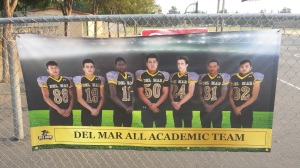
Del Mar High School, part of the Campbell Union High School District (CUHSD) and located just beyond the borders of the Proposed South Bascom (North) Urban Village Community, is an important asset to the community it serves. With its recent accreditation as an International Baccalaureate school, it is attracting students beyond its borders.
Its contribution to the community extends beyond traditional academic topics, as it serves adult students at night, hosts theater productions throughout the school year, boasts a vibrant athletic program and even rents its facilities to faith-based groups on Sundays. The space is activated well beyond the normal school hours and is conveniently located near a VTA light tail train station.

Still, this approximate 41-acre site could yield much more than it does today. Simply, this is an excellent location to add a mix of retail and office and housing for teachers, staff and others in the community and would enhance the South Bascom (North) Urban Village.
The Teachers Village in Newark, New Jersey, which offers housing, retail and recreational facilities, is an example of a mixed-use community, which, according to this September, 2017 Curbed article, puts the teachers at the center of the community. As indicated on the Teachers Village website;
“Teachers Village is transforming former parking lots into a sustainably-designed (LEED-ND) dynamic new neighborhood that offers opportunities for teachers, students, professionals and visitors to live, work, shop, eat and learn.”
New levels of collaboration and learning among the teachers are some of the subtle benefits of the Teachers Village, according to this February, 2018 Yahoo! Finance article.
The California legislature understands the importance of this sort of development, as they passed, in September 2016, the Teacher Housing Act of 2016 (SB-1413) which, “aims to create affordable housing for teachers and school district employees by utilizing land owned by school districts for development of income-restricted housing.”
The method for allocating residential units would have to be determined, but the goal would be to create a diverse community that would include teachers and school staff and others such as seniors, city workers [See the “Adopt a Cop” proposal] and people in the private sector.
There would be a huge opportunity for the creation of common-use, public facilities, such as a library, pool, public meeting rooms, community garden, day-care space, recreation equipment and park structures that could be used by both the school and the community.

Further, programming could be developed that would facilitate mixing between groups that would traditionally be separated. For instance, Del Mar’s GenYes program could be extended to help seniors and others who live on the campus grounds better understand and use technology [there would be additional benefits gained from intergenerational living, as seen in this article]. This is the type of activity that could help overcome issues concerning digital literacy and awareness of the benefits of digital connectivity, as outlined in the City of San Jose’s November 2017 Digital Inclusion Strategy report.
Another benefit to building housing on school property is the potential for sharing the school’s broadband connection. Residential use of the Internet will have peak requirements later in the day compared to the school, meaning the size of the Internet connection to the campus will probably not have to change. The cost of providing Internet to the residential and commercial customers then could be directly related to the marginal costs of bandwidth, which should allow for lower access costs for the residences than traditional approaches [note, this model was used with a local school district and youth baseball league to add security camera monitoring to the latter’s fields that are on school property].
The low-cost bandwidth would allow for bundling of Internet with unit rentals, removing both cost and billing challenges that were identified as the two biggest barriers to broadband adoption in the aforementioned Digital Inclusion Strategy Report.
More importantly, the mixed-use approach, anchored by community programs and broadband, would activate the campus 24 hours a day, yielding a safer campus. At the same time, it would provide affordable housing for teachers and staff, reducing their Vehicle Miles Traveled (VMT), which is important to meeting State environmental goals.
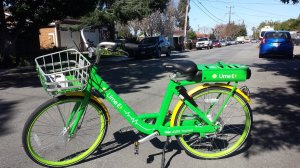
By mixing elements of retail into the project, along with the proximity to transit, it would be possible to create a village that eliminates car ownership and its associated costs for many of its residents. More importantly, it would be a place where people move at human-scale, by walking or biking, creating chance interactions that often form the basis for relationships and a stronger community.
top
But School Districts Aren’t Land Developers – Couldn’t It Bankrupt a School District?

For illustrative purposes, Panoramic Interests, a San Francisco developer, has a financing model whereby they build a module-based apartment building over a public parking lot, effectively making use of fallow air-rights. Like modular buildings that schools routinely install, Panoramic’s construction process is fast compared to traditional approaches and only requires 8 to 11 months. A high-level view of the financial model is depicted at this link and suggests a monthly cost for the construction and maintenance of the exterior of the building to be $1,000 per month.
The Panoramic model assumes a third-party service provider manages tenants, the interior of the building and works with third-party agencies, as needed, to provide rent subsidies. Assuming this 3rd party took a 20% commission for these management services, this would mean an average rent of $1,200 ($1,000 from Panoramic plus $200 for the service provider), which is 50% of the approximate $2,460+ per month average for a 1-bedroom apartment in San Jose.
It is important to note, that these would be new, fully furnished homes with high-quality fixtures, as seen in this video. These units would have broad appeal, regardless of socio-economic status. At an unsubsidized price of $1,200 per month, this would require an income of $48,000 to ensure rental to income ratio of less than 30%, which is a common metric to gauge affordability. One potential advantage the higher-density, mixed-use urban village approach would have is that it would be possible for a tenant to ditch their car, potentially saving thousands of dollars per year in mobility costs (AAA estimates $8,469 in costs per year for the average car).
Assuming a $1,200 rental price to cover costs (the effective rent might be lower for individuals who qualify for subsidies), a certain number of units could be rented directly at that price, while the rest could be rented at market-rate, generating a net-positive cash-flow for CUHSD. Additional revenue could come from businesses co-existing on the first floor of such a development.
Beyond providing quality housing at affordable rates at a profit, there are other more difficult-to-quantify benefits, such as having a space that is activated 24 hours a day, every day.
Again, the Panoramic example is not intended to endorse that specific developer, but to show that there is a potential public-private partnership opportunity without having to put public money at risk. DCG Strategies looks at different ways school districts can provide workforce housing in this April, 2017 presentation.
If CUHSD wants to make a financial investment instead of relying on a purely private financing approach, there are multiple sources of public monies available both to seed such a project as well as help maintain it once it is launched. In some of the cases, this might mean simply improving the value of existing spending through new relationships between disparate public agencies.
In addition to traditional federal and state low-income housing credits, here are some examples of public monies that could potentially be leveraged:
- City park fees – new developments of a certain size pay into a park acquisition fund. Land is often the most expensive and difficult part of adding parkland. If a modular high-rise were built above a parking lot, then, at a minimum, a micro-park and/or agrihood would enhance the value of the high-rise and the school, as well as provide a valuable addition to the community. The money that would normally be needed to purchase the land, could instead be invested in the building or put in a dedicated park maintenance fund. Another synergy could be maintenance of the park. Since it is on school grounds, the school district could continue to maintain it with the city paying them a maintenance fee for this new public park. Since the school would normally be maintaining that area, the marginal costs of maintenance would be lower than the city maintenance, so it could be a win-win. For instance, the City of San Jose Parks Recreation and

Touring a San Jose Park Neighborhood Services indicates that it needs $16.3k per acre per year to maintain a park, while they only have budget for $13.6k (see page 11 of the linked report). If the school district charged the city, say, $8k, to maintain these new parks, then everyone would win (assuming the marginal maintenance costs for the school district didn’t increase by more than $8k). Another synergy might be if one of the residential units were reserved for a PRNS worker to live in, this might help PRNS attract and retain talent, which is a major issue for PRNS (see page 4) .
- Affordable Housing Bond Measure A – Measure A, the November, 2016, $950 Million bond aims to create affordable housing in Santa Clara. Monies from this bond could be a possible source of seed funding, as what is proposed is fast and affordable, as it uses existing land.
- Cap and Trade – Funds are available from the “Cap and Trade” to be distributed for “investments in low-income communities and households,” which, according to the California Air Resources Board (CARB) website, defines Del Mar’s location (Census tract 6085502102). By placing people near where they work and near transit, Vehicle Miles Traveled and the resulting carbon footprint are reduced. Car-Free, mixed-use housing, as proposed, serves CARB’s goal.
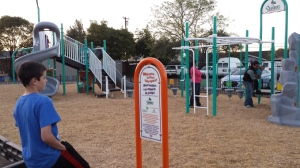
Beyond financing, a huge benefit of the school district embarking on such a project is a huge reduction in time-to-market compared to a project requiring city permitting (granted there might be some local permitting required, but it would be a fraction of normal requirements).
As an example, Campbell Union School District will mostly likely make the decision to expand Monroe Middle School by 200 units at the February, 2018 CUSD board meeting. The new buildings will be ready by August for the 2018/19 school year, thanks to modular construction and streamlined permitting. That is the kind of speed we need to build the housing stock necessary to meet the demands of Silicon Valley’s workforce.
A New Way for the Story to Unfold
It’s 6:55 A.M. and Kerry has overslept from staying up too late with friends after the weekly Sunday Night Swing Dance event at the Del Mar Manor community room. It’s not a problem, as she has still has time to eat a piece of fruit she had picked a day earlier from the on-site agrihood and drink a strong cup of joe from the downstairs coffee shop prior to starting her peaceful 5-minute walk to work.
As she opens the door to her Del Mar High School office, she feels surprisingly refreshed for a Monday morning. She even has a few moments to reflect on the decisions made by the CUSHD and others that changed her life for the better;
- She was pleased that local leaders, with the help of a group like the Plus Leadership Initiative associated with Cal Berkeley, broke down the silos that separated planning efforts. Combined, they were able to provide much greater public benefit than projects completed in decades past.
- As CUHSD redeveloped the school they replaced the one-story, spread out wings of classrooms from the 1950s with buildings of two and three stories. Not only did this make it easier for students to get to their classes, it also opened land for creative configurations of residential and commercial businesses that made Kerry’s daily commute feel like she was traversing a small town.
- School security was also improved, because, the taller buildings, meant fewer ingress points that were easier to secure than a campus where every classroom had a door to the world.
- Instead of spending money on fencing off the campus, that money was invested in making it a desirable and safe, community attraction.
- The City of San Jose, working closely with VTA and its private partners, extended bike-share and electric-scooter-share programs to Del Mar, as well as autonomous, electric and accessible shuttle transport giving low-cost mobility options that allowed Kerry to sell her car. She was able to divert money, she once spent on gasoline, maintenance and insurance, into a retirement savings account.
- The broadband connection allows the on-site nurse to communicate with Kerry’s doctor at Good Samaritan meaning the doctor visit that would take two-hours in traffic can now be done in 15-minutes during her lunch hour at the on-site medical center.
- Kerry’s new-found senior friends, who live on her same floor, have been a great help around campus. Her friends have been entertained at the high school sporting events, while the athletes enjoyed performing in front of larger and very appreciative crowds. The students are learning from these seasoned citizens, while the seniors feel like they are part of the community again.
She realizes that they indeed had built not just housing that is affordable, but a community where all are welcome.
References
The following are relevant links referenced above:
- Goals to Guide Planning and Development Along with the Eastern Stevens Creek Corridor in Santa Clara and San Jose.
- Proposed South Bascom Urban Village Community
- Can teacher housing entice educators to work in expensive cities?
- The Teachers Village website About page
- There’s a brilliant $150 million ‘Teachers Village’ in Newark
- Work Force Housing for Teachers Signed by Governor in California
- SB-1413 School districts: employee housing
- Adopt a Cop
- DMHS GenYes
- How adding youth to a Dutch old age home is improving life for all
- City of San Jose’s November 2017 Digital Inclusion Strategy report
- CNN’s Feature on CITYSPACES® MicroPAD®
- Financial Structure
- Bay Area rents likely to stay sky high
- CAR-FREE, MICRO-DNA AND MODULAR – PART 1
- Rich millennials are ditching the golf communities of their parents for a new kind of neighborhood
- BRIDGING THE GAP: SCENARIOS AND STRATEGIES FOR DISTRICT WORKFORCE HOUSING
- Sustainable Park Maintenance
- Santa Clara County, California, Affordable Housing Bonds, Measure A (November 2016)
- California Air Resources Board (CARB) website
Special thanks to CJ Gabbe, Patrick Kennedy, Lonnie Soury and Kirk Vartan for their feedback and suggestions that improved earlier revisions of this proposal.
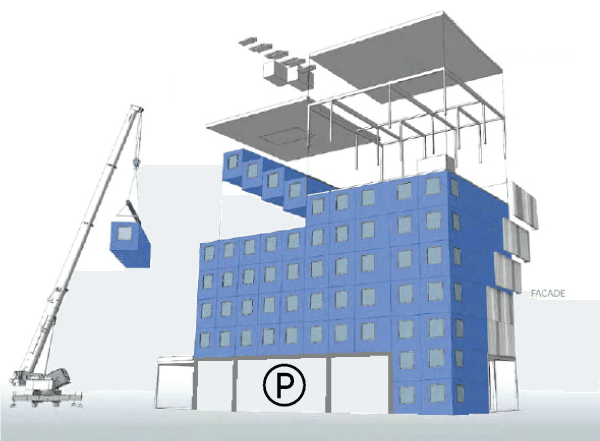



A local example of teacher workforce housing is Casa Del Maestro. Owned by the Santa Clara Unified School District, this development is smaller scope than what is envisioned above. At only 20 units per acre, it doesn’t meet the estimated 55 dwellings per acre needed to break even on the cost of city services. http://ktgy.com/work/casa-del-maestro/
From the Urban Land Institute site
Click to access One-Pager-Casa-del-Maestro.pdf
“Using certificates of participation, the school district was able to finance the development, and still retains ownership through a foundation. Since its completion, Casa del Maestro has remained fully leased and has maintained a long waiting list. Apartments are available only to school district teachers who have been in the district fewer than three years. In order to encourage turnover and home-ownership, teachers can live at Casa del Maestro for up to 5 years, at which time they can access the school district’s mortgage assistance program.”
They worked with an LLC, focused on the education market, formed by developer Thompson Dorman.
https://thompsondorfman.com/education-housing/
and the model of how it works can be found here:
http://www.21elements.com/Download-document/823-Session2.DorfmanRentalnosubsidies.html
LikeLike
And another community in the Miami area that is planning on doing something similar for their teachers:
https://www.washingtonpost.com/news/answer-sheet/wp/2018/03/28/teachers-living-at-school-miami-pushing-plan-for-educators-who-cant-afford-citys-high-rent/
and a private school in Carmel that built relatively large duplexes for its teachers. They also board students.
https://inhabitat.com/stevenson-school-passive-house-duplex-provides-teacher-housing-in-pebble-beach/
https://www.stevensonschool.org/
LikeLike
The 8 Spruce Street skyscraper, which sits on 1 acre of land in New York City, reserves the first four floors for a K-8 school that accommodates 648 students and includes 5,000 square feet of outdoor play area on the 4th floor. Doctors’ offices occupy floor five (the land was originally owned by the adjacent hospital) Above the elementary school are 71 stories with approximately 900 residential units. The zoning did not require any parking in the building, although there are 175 parking spaces mostly reserved for the adjacent hospital.
https://en.wikipedia.org/wiki/8_Spruce_Street
https://www.sprucestreetnyc.org/
The best summary of what has been done is from the Urban Land Institute
https://casestudies.uli.org/new-york-by-gehry-at-8-spruce-street/
LikeLike
What sort of issues might have to be addressed having to do with alcohol on campus? For example, would it be violating a law to have beer on a private residence on campus? What sort of measures could be taken to prevent this as an issue (e.g. putting the portion of the land that has residences/businesses in a trust to shield it from the school operations)?
Similarly, what, if any, vetting would need to be done of spouses/partners who lived in a so-called village? What about vetting for people who aren’t teachers who might live in the market-rate units?
Would there be the possibility of ownership or would it be rental only?
What sort of retailers/commercial shops would there be? Who would vet those businesses?
I am in a teacher in a different school. Could I live there?
Would it be fair if some school properties had housing and others didn’t?
Would it be possible to set-aside some of the housing for a class of people (e.g. say retired teachers) and not run afoul of Fair-Housing discrimination laws?
By building housing and retail on school property, wouldn’t you be taking away greenspace?
What if there aren’t enough teachers/staff willing to rent the houses?
How are units allocated?
How is the district protected from financial downside?
LikeLike
And here are the capital expenditure plans for Del Mar High School based on the bond revenue from Measure AA. Note, 4 of the single story buildings are going to be replaced with four more single story buildings, as planned today.
Click to access 4P1uHmaqPodsS1KVEz7XTQmXbhVyT7pBQWR37rIwn1kwhd3m.pdf
LikeLike
And an excellent article by Nikki Lowy about San Mateo Community College District’s teacher/student housing effort. The most important ingredient – political will.
https://blog.landed.com/when-does-building-teacher-housing-make-sense/
LikeLike
This article make the case that not everyone favors Teachers’ housing.
https://www.edweek.org/ew/articles/2018/01/24/does-it-make-sense-to-offer-housing.html
In fact, the arguments it makes why Teachers’ housing may be unfair to certain groups is one of the reasons the above concept includes housing for a variety of people beyond teachers. Again, it is hoped that a business model could be created that would be at no-cost to the school district, while benefiting teachers and other people who otherwise would not be able to afford housing here, while providing a mix of market-rate housing as well.
LikeLike
And another article about the Teachers Village in New Jersey that discusses the financing mechanism that made this happen, as well as references to efforts in other parts of the country such as a school district in Vail that is looking at building a tiny home community for its teachers.
https://www.impactinvestingexchange.com/teachers-village-in-newark-a-case-study-in-redevelopment/
LikeLike
And an interesting potential law dealing with how public agencies deal with surplus land and the opportunity to convert it into affordable housing:
https://leginfo.legislature.ca.gov/faces/billTextClient.xhtml?bill_id=201720180AB2065
LikeLike
Failure to build housing at Cupertino
It started off sounding great in 2015
https://www.nbcbayarea.com/news/local/Cupertino-Union-School-District-To-Build-Over-200-Affordable-Housing-Units-For-Teachers-361116211.html
But, there was soon a big opposition. It is in a residential neighborhood, which wasn’t a great candidate for density. Lots of ugly accusations.
http://saveluther.com/
And how it was cancelled and the discussion stopped
And another story of why the superintendent was let go, which included other issues besides housing:
https://www.nbcbayarea.com/news/local/Leaders-of-Cupertino-Union-School-District-to-Release-Embattled-Superintendent-416279173.html
LikeLike
Recommendations from a June 2018 Santa Clara County Grand Jury Report (page 25)
Click to access BMRH%20Rpt%202018-06-19%20REVISED%20FINAL.pdf
“Recommendation 1b
Cities should identify parcels within one-half mile of a transit hub that will help them meet their LI and moderate-income BMR objectives in the current RHNA cycle, by the end of 2019. Cities to respond are Campbell, Gilroy, Milpitas, Morgan Hill, Mountain View, Palo Alto, San Jose, Santa Clara and Sunnyvale.”
City of San Jose and CUHSD – Del Mar is within 1/2 mile of a transit hub!
LikeLike